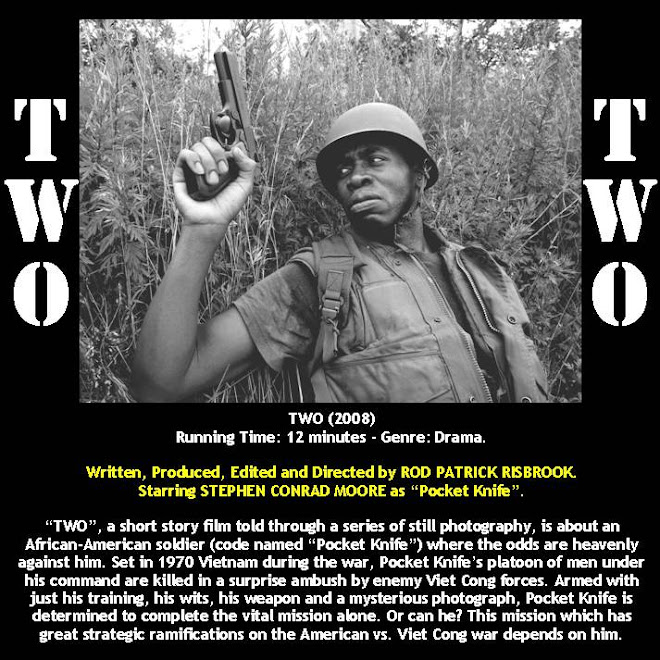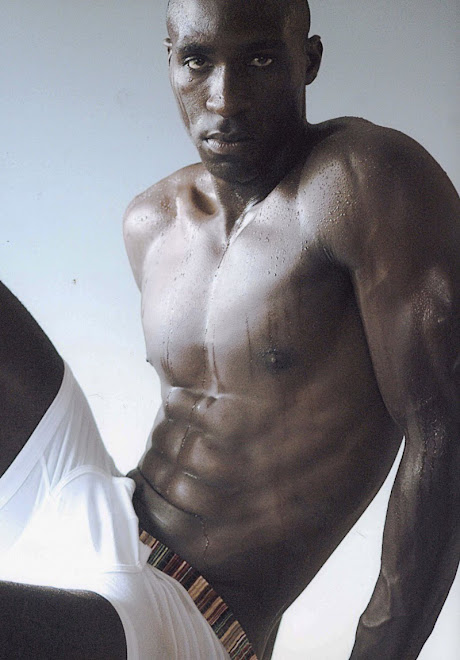©9/11And The Task of Healthy Grieving
by Victor R. Pond, Director of Policy, Research and Community Health, GRIOT Circle, Inc.

One local paper’s headline read “A pain that won’t ease 10 years.” On this 10th Anniversary of that fateful 9/11, as a nation, we once again rehearse the recalcitrant memories of that dark day. Audio-visual images faithfully recorded, won’t allow us to forget, delete or edit those memories. We remember the rivers of tears, the ash covered screaming bodies running fueled by terror. We remember the chocked air, the nightmarish clouds of debris. We remember the collapsing towers. We remember those that perished and we also remember those who survived, yet may still bare the guilt of surviving. Not only are these memories fresh and raw, but our collective emotions are still dragging themselves to that place of redemption.
I can’t imagine what life has been like for those hundreds, if not thousands, who lost loved ones, friends and colleagues on that day. I was living in Chicago at the time when it happened. There I was at the gym heading to the locker room when I glanced over at one of the TV monitors only to have my attention arrested by the image of a seriously wounded Twin Towers. The billowing fiery smoke didn’t elicit a major concern. I comforted myself in believing that whatever it was, the FDNY could handle it. Yet, this was different. Personal. I didn’t have the luxury of an emotionally detached gaze. For five years I worked at 225 Broadway on the 21st Floor and there we had a direct view of the Towers. I was in those buildings virtually every day for one reason or another. Even on weekends. The images projected on those flat screen TV monitors had an eerie resemblance to disaster scenes I had seen in several catastrophe themed movies. So I stood there wishing this was really a movie scene…..nothing more.
Then the unspeakable happened. Like the walls of Jericho, the twin symbols of Western progress and prowess came crashing down. Workout was cancelled. Not sure how I made it home, but I did. I sat on my sofa for hours, immobilized. The TV was on and I was gazing at a tapestry of frantic reports and reporters. The days following were simply strange to say the least. I knew I had to journey back to NYC not only for a multi-sensory experience, but to join in the chorus of grief and loss. A little over a month later, with my courage in place, I found myself downtown engulfed by the overpowering combined smell of still smoldering metal and pulverized concrete. Then there was the bizarre stage ornamented with mangled ruins and ashy soot covered buildings. I stood there mesmerized unable to even imagine that proverbial light at the end of the tunnel. Disbelief merged with anger. Anger and sadness colluded with rage.
As a “visitor” I couldn’t help but notice how people walked around seemingly dazed. There was an unusual exhibition of politeness, even in the NYC subway constellation. The very atmosphere was that of a city remarkably tamed, struggling to climb out of the heaving sadness. In many ways we still struggle. Perhaps the greater hurdle of crossing that bridge back to life is believing that it’s possible or even necessary. Those of us that made it through the AIDS Crisis of the 80s know far too well the countless disruptive eulogies laden with their conundrum of grief. How many did we helplessly watch die? Hundreds, thousands? Not to mention, what seemed like endless funerals had become the new normal.
9/11 is replete with lessons for us all to heed and apply. As we embark on this now yearly open ritual of remembrance for the victims of 9/11, we still face the morbid challenge of re-framing our cultural avoidance/dance around death and the dead. Despite all our religion and science, death and dying remain taboo topics for the most part or at best are relegated to science fiction or horror movies. It’s high time to call the mainstream media to task for its self-serving coverage of this story that continues undermining the tragic loss of people of color. Even on that day, reporters could only find Whites to interview.. really?...to hear the testimonies on non-Whites one had to tune to Univision or BET. While we [people of color] have learned to accommodate this systematic revisioning of history, rendering us invisible, it simply keeps adding salt to wounds that for many remains open. This certainly can’t be good for ushering us into a united process of healthy grieving particularly when our grief and loss are relegated to footnotes.
I believe that in order for these recycled 9/11 rituals to have any healing powers that go beyond mere symbolism, we first have to “democratize” our [national] grief not merely set up hierarchies for it. Has anytime ever been set aside to grieve the Middle Passage? We’re talking about millions, not thousands of lives swallowed up in that watery grave. The fact that in all probability we will never know their names or see images of their faces, does not give us permission to ignore that event that despite being swept under the rug of historic revisionism, stubbornly continues haunting us like a restless ghost.
What makes 9/11 paralyzingly traumatic is not so much the loss of thousands of lives. The world is used to witnessing that and in much larger numbers. It’s the ugliness of its symbolism: the slap in the face by the “naked” dwarf, unhinging the national pride of the armored giant. It is the personification of a “low tech” assault on the impregnable kingdom. It was also a violent jolting of the “new world order” doctrine pillaging its tenets. So here we are ten years later, still stuck it seems, somewhere in the middle of anger and depression (or is it rage and self-loathing?).
People need to embrace, not run from the pain that comes with loosing loved ones (even strangers) particularly at the hand of circumstances way beyond anyone’s control. Truth is, we don't "get over" grief; we learn to carry it. Unfiltered, unprocessed grief does not magically inject us with emotional and/or psychic anesthesia. Grief experts tell us that unresolved grief can result in depression, apathy, addictions, overworking, compulsive/aggressive behaviors, chronic physical symptoms and progressive social isolation. Worst, it can ultimately result in a turning off of the lights in ones life.
This could well be a good time as any for mental health professionals, clergy and elected officials to lead the way in infusing our cultural landscape with the messages that healthy grief is essential for a productive society. People have to be taught how to grieve, how to let go and how to access resources/support to aid in reintegrating their brokenness. This is certainly no time for blind fanatical patriotism. It is though a time for renewed allegiance to being there for each other as we face current and future tragedies, whatever shape or form they may show up.
I can’t imagine what life has been like for those hundreds, if not thousands, who lost loved ones, friends and colleagues on that day. I was living in Chicago at the time when it happened. There I was at the gym heading to the locker room when I glanced over at one of the TV monitors only to have my attention arrested by the image of a seriously wounded Twin Towers. The billowing fiery smoke didn’t elicit a major concern. I comforted myself in believing that whatever it was, the FDNY could handle it. Yet, this was different. Personal. I didn’t have the luxury of an emotionally detached gaze. For five years I worked at 225 Broadway on the 21st Floor and there we had a direct view of the Towers. I was in those buildings virtually every day for one reason or another. Even on weekends. The images projected on those flat screen TV monitors had an eerie resemblance to disaster scenes I had seen in several catastrophe themed movies. So I stood there wishing this was really a movie scene…..nothing more.
Then the unspeakable happened. Like the walls of Jericho, the twin symbols of Western progress and prowess came crashing down. Workout was cancelled. Not sure how I made it home, but I did. I sat on my sofa for hours, immobilized. The TV was on and I was gazing at a tapestry of frantic reports and reporters. The days following were simply strange to say the least. I knew I had to journey back to NYC not only for a multi-sensory experience, but to join in the chorus of grief and loss. A little over a month later, with my courage in place, I found myself downtown engulfed by the overpowering combined smell of still smoldering metal and pulverized concrete. Then there was the bizarre stage ornamented with mangled ruins and ashy soot covered buildings. I stood there mesmerized unable to even imagine that proverbial light at the end of the tunnel. Disbelief merged with anger. Anger and sadness colluded with rage.
As a “visitor” I couldn’t help but notice how people walked around seemingly dazed. There was an unusual exhibition of politeness, even in the NYC subway constellation. The very atmosphere was that of a city remarkably tamed, struggling to climb out of the heaving sadness. In many ways we still struggle. Perhaps the greater hurdle of crossing that bridge back to life is believing that it’s possible or even necessary. Those of us that made it through the AIDS Crisis of the 80s know far too well the countless disruptive eulogies laden with their conundrum of grief. How many did we helplessly watch die? Hundreds, thousands? Not to mention, what seemed like endless funerals had become the new normal.
9/11 is replete with lessons for us all to heed and apply. As we embark on this now yearly open ritual of remembrance for the victims of 9/11, we still face the morbid challenge of re-framing our cultural avoidance/dance around death and the dead. Despite all our religion and science, death and dying remain taboo topics for the most part or at best are relegated to science fiction or horror movies. It’s high time to call the mainstream media to task for its self-serving coverage of this story that continues undermining the tragic loss of people of color. Even on that day, reporters could only find Whites to interview.. really?...to hear the testimonies on non-Whites one had to tune to Univision or BET. While we [people of color] have learned to accommodate this systematic revisioning of history, rendering us invisible, it simply keeps adding salt to wounds that for many remains open. This certainly can’t be good for ushering us into a united process of healthy grieving particularly when our grief and loss are relegated to footnotes.
I believe that in order for these recycled 9/11 rituals to have any healing powers that go beyond mere symbolism, we first have to “democratize” our [national] grief not merely set up hierarchies for it. Has anytime ever been set aside to grieve the Middle Passage? We’re talking about millions, not thousands of lives swallowed up in that watery grave. The fact that in all probability we will never know their names or see images of their faces, does not give us permission to ignore that event that despite being swept under the rug of historic revisionism, stubbornly continues haunting us like a restless ghost.
What makes 9/11 paralyzingly traumatic is not so much the loss of thousands of lives. The world is used to witnessing that and in much larger numbers. It’s the ugliness of its symbolism: the slap in the face by the “naked” dwarf, unhinging the national pride of the armored giant. It is the personification of a “low tech” assault on the impregnable kingdom. It was also a violent jolting of the “new world order” doctrine pillaging its tenets. So here we are ten years later, still stuck it seems, somewhere in the middle of anger and depression (or is it rage and self-loathing?).
People need to embrace, not run from the pain that comes with loosing loved ones (even strangers) particularly at the hand of circumstances way beyond anyone’s control. Truth is, we don't "get over" grief; we learn to carry it. Unfiltered, unprocessed grief does not magically inject us with emotional and/or psychic anesthesia. Grief experts tell us that unresolved grief can result in depression, apathy, addictions, overworking, compulsive/aggressive behaviors, chronic physical symptoms and progressive social isolation. Worst, it can ultimately result in a turning off of the lights in ones life.
This could well be a good time as any for mental health professionals, clergy and elected officials to lead the way in infusing our cultural landscape with the messages that healthy grief is essential for a productive society. People have to be taught how to grieve, how to let go and how to access resources/support to aid in reintegrating their brokenness. This is certainly no time for blind fanatical patriotism. It is though a time for renewed allegiance to being there for each other as we face current and future tragedies, whatever shape or form they may show up.





+LR+Edit+32.jpg)


.jpg)


























.jpg)



